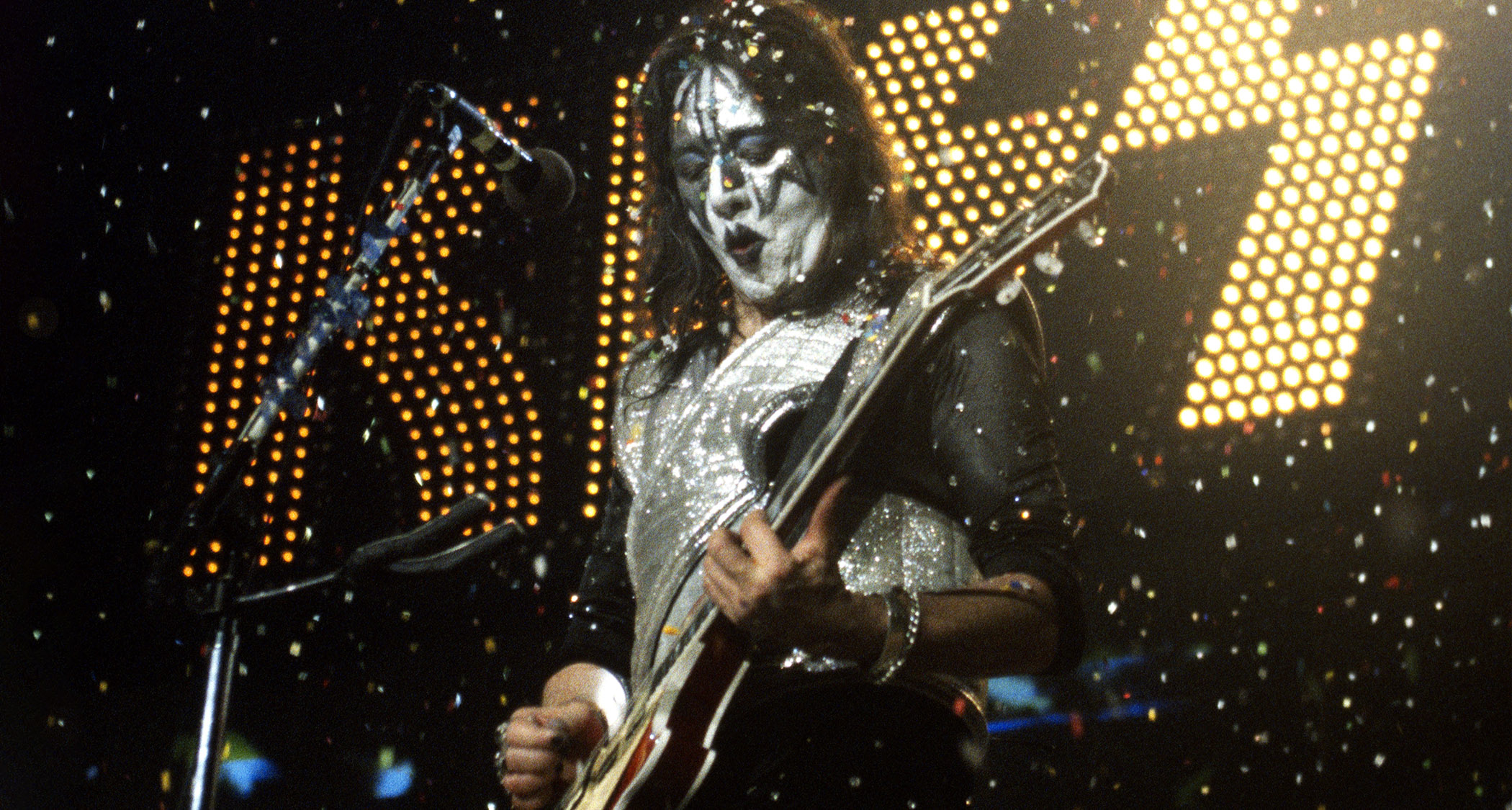Code Orange: "We've taken guitar headstocks to the forehead, and broken fingers and toes onstage"
Guitarists Reba Meyers and Dominic Landolina on their uncompromising approach to performance and the creation of their digitally influenced masterpiece Underneath
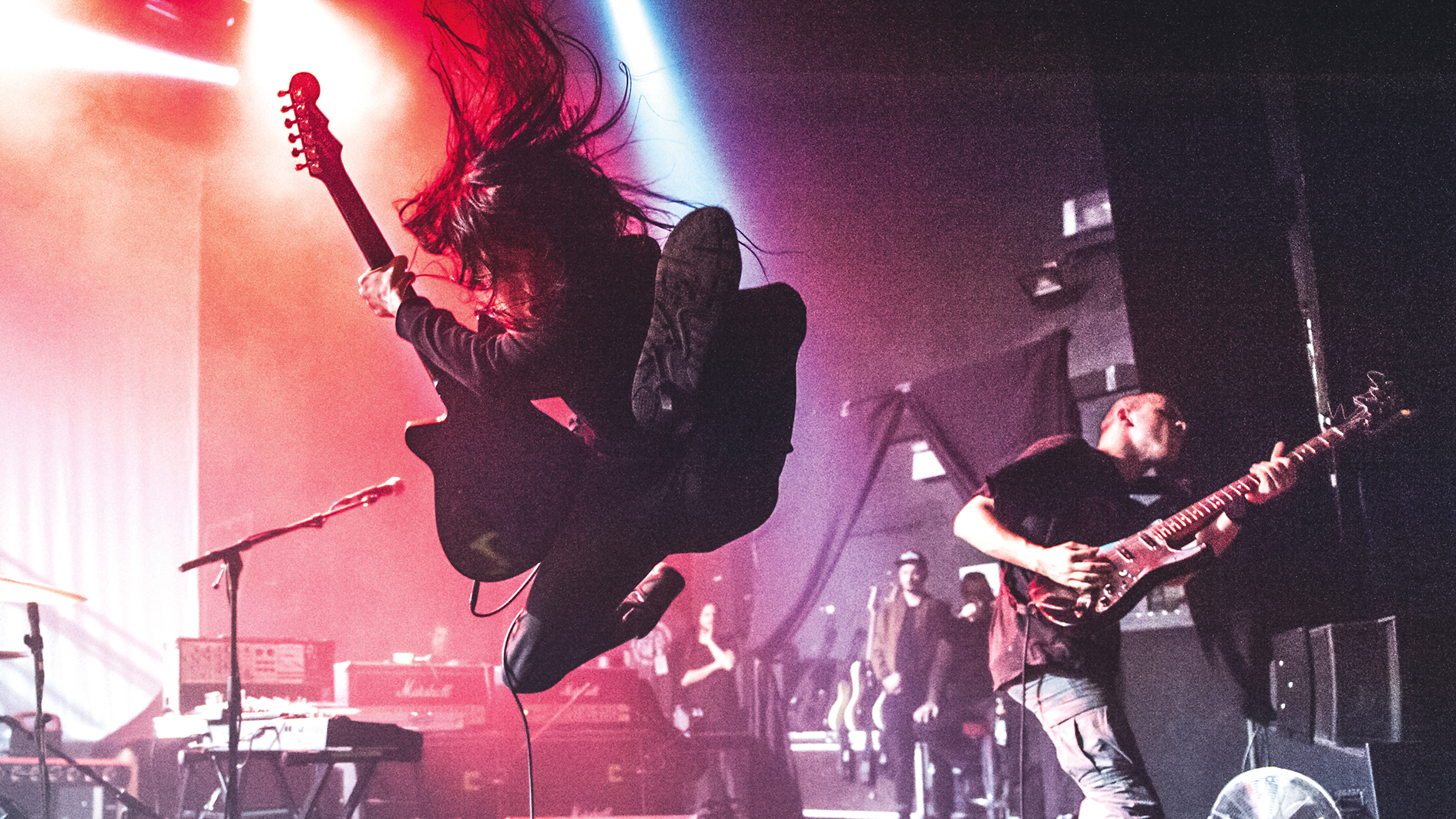
They’re not the kind of band that finishes a song and then delivers a rehearsed speech to the crowd. They don’t dwell on chart numbers or write music for the times. And they’re not easy to categorize. Yet Code Orange are one of the most exciting and forward-thinking new ultra-aggressive bands - and they’re not even that new.
Arising from gritty Pittsburgh as Code Orange Kids in 2008 when they were barely teenagers, the group released several galvanic hardcore demos and EPs before signing to Deathwish Inc. in January 2012. Since then, they’ve released four albums, changed their name and evolved into an eclectic and sonically unpredictable band that seamlessly combines hardcore, metal, alternative, noise-rock and industrial into their contorted tunes.
As complex and variegated as their music has been, many of the band’s greatest accomplishments - including the Grammy-nominated 2017 record Forever and the new offering Underneath - have stemmed largely from impulse.
“When I write a chord progression, I let my emotions and my subconscious guide what I play,” explains guitarist and vocalist Reba Meyers, who co-formed the band back in middle school with vocalist, keyboardist and former guitarist Eric “Shade” Balderose, along with drummer Jami Morgan.
“Some of my favorite parts start out as fuck-ups. Instead of correcting them, we might listen to them and then go, ‘Wow, that’s fuckin’ cool.’ And it will drive the songs in different directions.”
Growing up in a punk scene that encouraged breaking the rules - as long as a band remained heavy and retained its integrity - Code Orange quickly diverged from their hardcore formula and eagerly became stranger and more musically schizophrenic over the years.
Their most monumental growth spurt began in late 2017 with the addition of second guitarist Dominic Landolina, whose razor-honed riffs and higher-end sound complimented Code Orange’s hardcore progressions.
All the latest guitar news, interviews, lessons, reviews, deals and more, direct to your inbox!
We’re not the type of band that has one guy writing even a full song
Reba Meyers
In addition to featuring a new range of Pantera- and Slipknot-inspired passages, Underneath is propelled by a sometimes random-sounding array of digitally manipulated guitar noises. These push the album to more diverse avenues that explore the guitarist's caustic industrial programming and the band’s digitally warped production techniques.
But it’s not like someone hands a complete song to the rest of the band and then Balderose manipulates it with computers.
Code Orange may resemble anarchists, but their approach to songwriting is nothing short of democratic. “We’re not the type of band that has one guy writing even a full song,” Meyers says. “We always start with a single idea from someone and then we send it back and forth, sit in a room and mess with it. And by the time it gets through the digital manipulations, sometimes it’s barely recognizable from what we started with.”
“There are definitely songs on Underneath where I came up with the main riff and then Reba or Jami changed it around to their liking and it became something better,” Landolina adds.
Collaborations can be a great way of injecting multiple voices into a project. But constantly weighing numerous opinions can be time-consuming. And for Code Orange, the process infringed on the band’s spontaneity.
Despite the impulsive, helter-skelter approach to songwriting, Underneath took the band 18 months to write and another six weeks to record and mix. Along the way, there were plenty of arguments, but the band’s long-time friendships kept the tension under control and their refusal to rely on past accomplishments kept them pushing forward.
“We fought about ideas, but it never felt like there was friction for a bad reason,” Landolina says. “It can actually be productive when everyone is really getting into what they’re doing and telling each other what we want and what they think is the best way to do something. And in the end, we were always able to put those tense moments aside and use our differences as a creative tool."
With Underneath, you’ve ramped up ideas and taken all the best elements of your past efforts and magnified them tenfold. The industrial samples are more prominent, the guitar rhythms are more diverse and the digital noise is off the charts.
We really wanted a good balance between organic sounds and electronics, and I think that added to the chaos of the album, but it was a chaos that we were able to control
Reba Meyers
Reba Meyers: "Hell yeah, man. We worked our asses off on this. We went into the album with the attitude that we were going to push ourselves to the limit. We weren’t gonna look back and say, 'Oh, we should have worked harder on that.' So it was an all-day, every-day type of thing."
Underneath is full of musical contrasts. Were those reflective of the contrasts within the band when it came to choosing between different styles of playing?
Meyers: "There’s always that push and pull with us, but I think that’s what makes the process great. We really wanted a good balance between organic sounds and electronics, and I think that added to the chaos of the album, but it was a chaos that we were able to control."
While there are viciously fast and brutal parts in songs like You and You Alone, Back in the Glass and Erasure Scan, songs like Who Am I and Sulfur Surrounding are far more melodic. And Swallowing the Rabbit Whole and The Easy Way are more alternative and experimental.
Meyers: "We wanted to have it all. We wanted to bring back that raw hardcore element that we had on our first record, but then we also have parts that would stick in people’s heads and this insane, almost Matrix world of electronics going along with it. We wanted it to be an experience as opposed to a bunch of songs."
Dominic Landolina: "We love electronic stuff and industrial shit like Ministry. But we wanted to expand on that without doing it like Ministry does."
Was there a particular song that took the longest or caused the most friction?
Meyers: "That was every song! The track that was the most difficult was Swallowing the Rabbit Whole in terms of balancing all the elements and making it sound right to us.
"The structure of that song is so insane, we really wanted to get the right digital sounds in it. I have 30 versions of the song on my computer and then another 30 versions of each riff. It was fucking crazy."
In some ways, Underneath is a reflection of modern times. The melodies are analog-based, but there’s a heavy digital presence and the electronics provide much of the turbulence. It’s almost like you’re making a comment about technology destroying and taking over the natural and organic world.
Technology is taking over people’s minds. We’re all constantly being bombarded by digital noise that’s all consuming and overwhelming
Reba Meyers
Meyers: "It’s not something that we directly address, but I think if you listened back to this album 10 years from now you would realize there are references to the social climate we’re in and the dangers of the digital world.
"Technology is taking over people’s minds. We’re all constantly being bombarded by digital noise that’s all consuming and overwhelming. And it’s definitely impacting people and it’s impacting us. In that way, I think this was a pretty personal album."
There’s a duality there. As damaging as the digital world is, this album was created through all the benefits that digital music provides.
Meyers: "Yeah, for sure. It’s not all about us hating on the digital world. We’re talking about the effects it has on our psychology and mindset. But obviously, we embrace the digital world to create music."
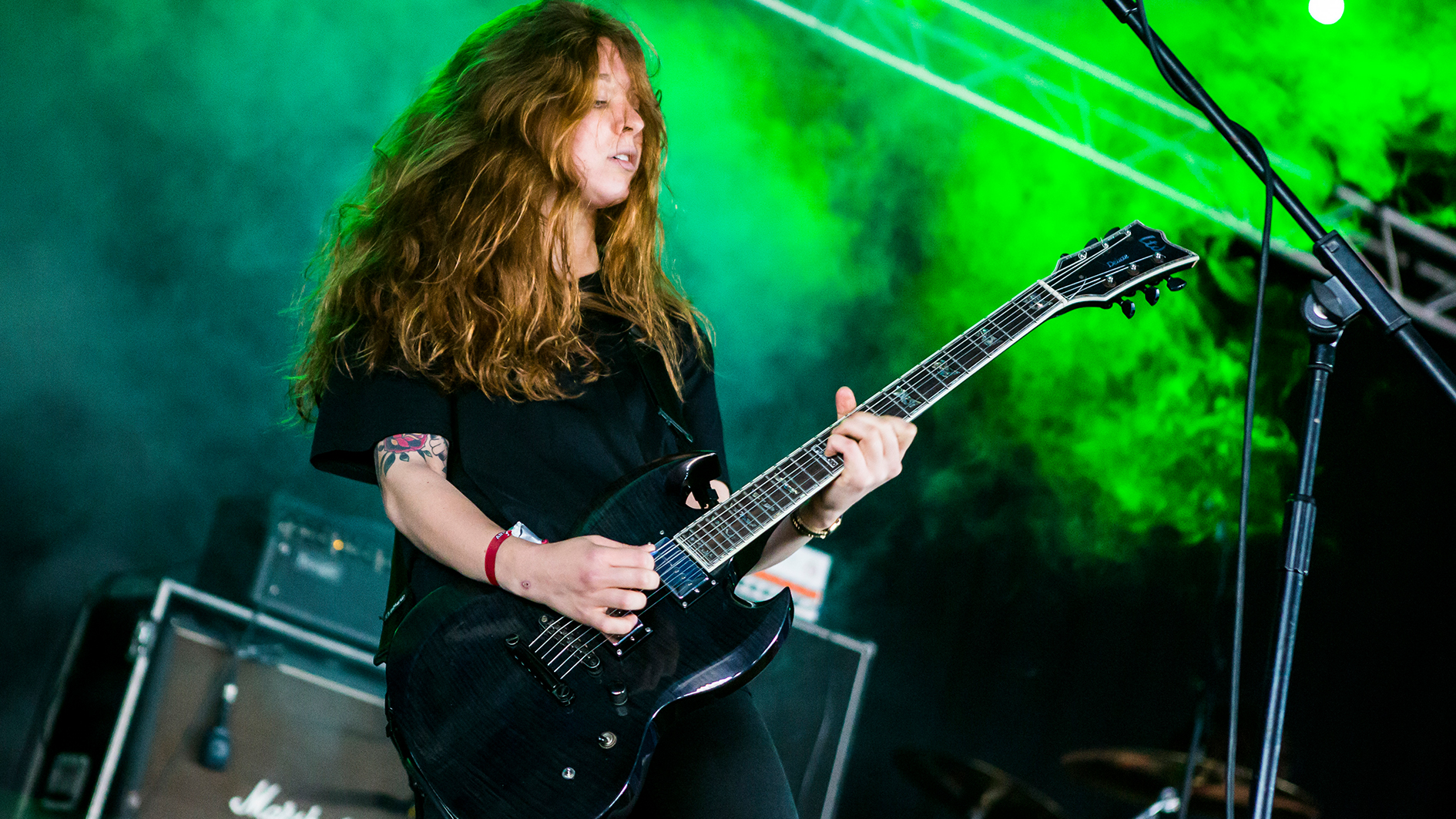
Were there certain artists or styles of music you were listening to before you did this album that influenced these songs?
Meyers: "I’ve always had an open mind when it comes to music. When I was a kid, I played a lot of classical music. And while I don’t pull from that directly at all, having that background helped me feel like I can be free to pull from everything I’m doing when I’m writing - soundtracks, heavy music, pop music and even rap.
"I’m not necessarily listening to that and thinking of specific ideas, but when I write I like to let my natural influences seep into what I play."
When did you play classical music?
Meyers: "I started playing flute when I was seven, and then piano. But I was always into guitar and bass at the same time. I started playing guitar when I was 11 and when I was 13 I was in a band."
I started playing guitar when I was 14. I got turned onto Jimi Hendrix as a teenager and that made me love the Stratocaster
Dominic Landolina
Dom, when did you start playing music?
Landolina: "I got turned onto Jimi Hendrix as a teenager and that made me love the Stratocaster. I started playing guitar when I was 14. The Strat became my first guitar and my second and third and so on. It started because Hendrix played it, but it just feels right."
Did all the electronics influence the sound of the guitar parts?
Meyers: "We mostly used electronics to manipulate what we wrote. A lot of times we would lay out the structure of a song and then flip-flop parts and replace some organic things with electronics.
"I recorded lots of riffs and chopped them up on Ableton [recording platform software] to change it around. Then I basically had to learn how to play the new rhythm, which put another spin on it. I’m all in favor of using computers, but for the guitar parts, I like to feel like a person played it."
Dom, you grew up as a more metal guitarist before you discovered hardcore.
Landolina: "I was totally into thrash metal bands like Slayer, Sepultura and Metallica and then I became good friends with [bassist] Joe [Goldman] around 2010 and he turned me on to punk and hardcore.
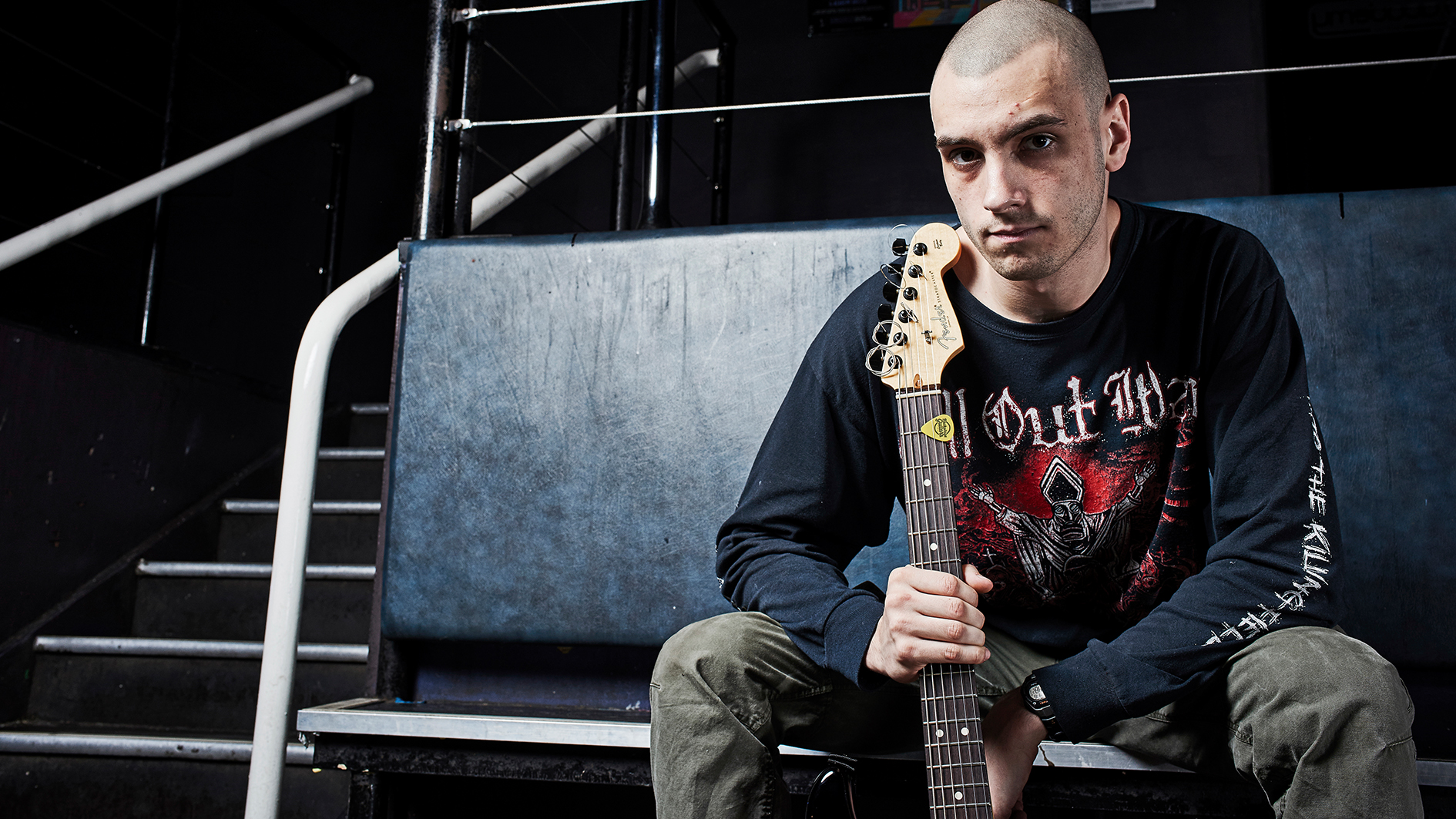
"He actually wasn’t in the band yet and they were still Code Orange Kids. Joe said, 'Man, you’ve gotta listen to these guys.' He played them for me and I was like, 'Oh my God, this is so great!' Code Orange Kids was one of the first hardcore shows I went to that really changed my views and opened my mind more to hardcore."
You went to elementary school with Reba and met Jami in middle school. Then, in high school, you played with them and Joe in the side band Adventures. Did you figure you might have a chance to join Code Orange since you were already friends?
Landolina: "I always thought it would be really cool to be in the band because we’ve all known each other since high school and I grew up musically with them and learned so much playing with them in Adventures."
Reba, when did you decide you needed a second guitarist, and did you immediately think of Dom?
He had been our friend forever so it just made a lot of sense. But at first, he was just there to play the extra guitar parts
Reba Meyers
Meyers: "We knew we needed someone to play with us in 2016 while we were writing Forever because Eric, who had always played a lot of guitar, was focusing hard on writing all these electronic layers and keyboard parts. It became clear that he couldn’t do both so we all agreed to bring Dom in.
"He had been our friend forever so it just made a lot of sense. But at first, he was just there to play the extra guitar parts. Then he started touring with us but he still wasn’t a full member until later - and he didn’t really write with us until the new album."
Dom, were you ever frustrated that they didn’t ask you to come on board earlier?
Landolina: "No, because the only band I had been in was Adventures so I didn’t have as much experience as they did. But I loved them so much as a band, I always felt like no matter what happened I wanted to see Code Orange every time they played because their music really struck a chord in me."
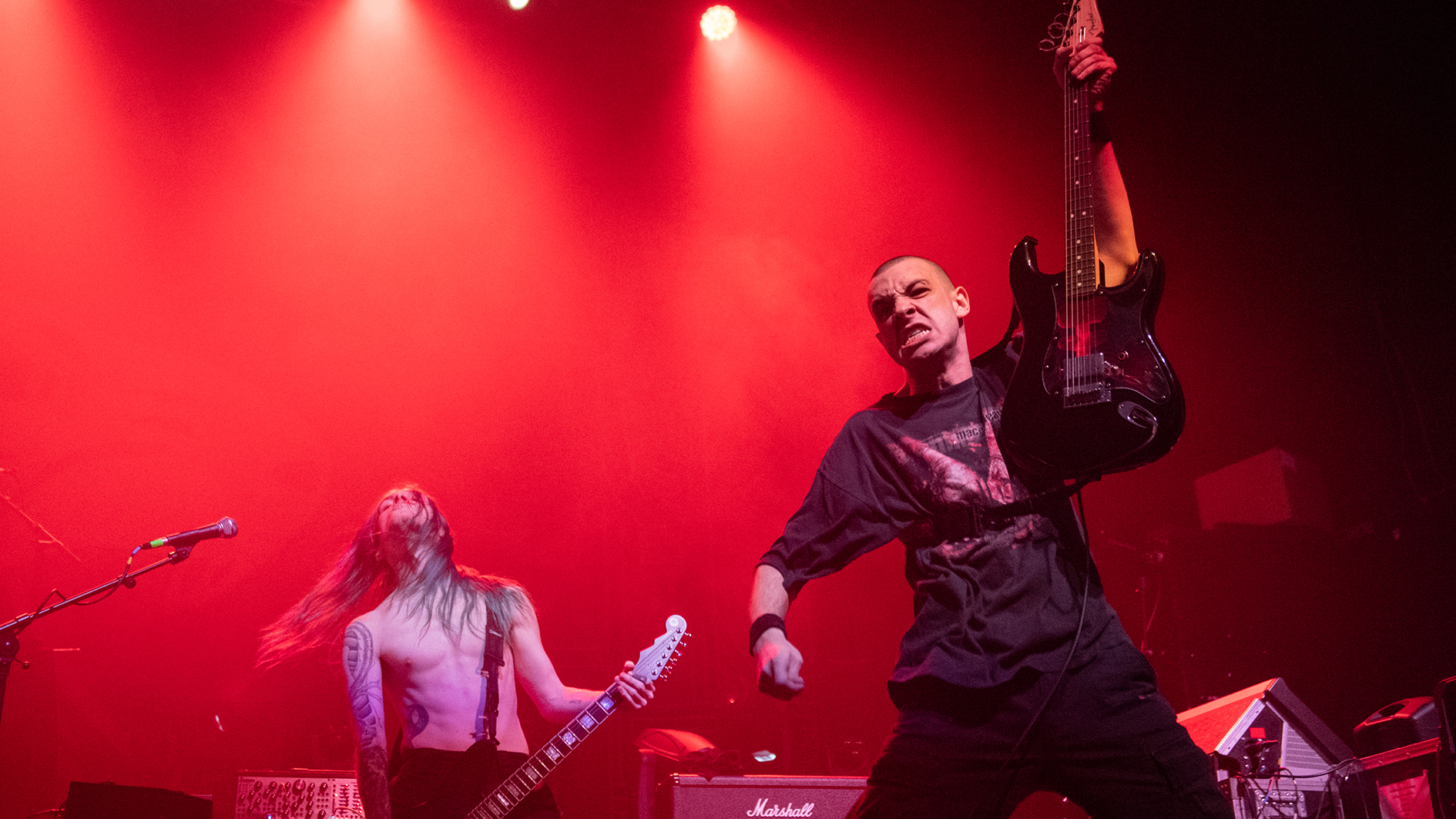
Who invited you to join the band, and can you remember where you were when you were asked?
Landolina: "I was driving around and I remember exactly what street I was on. Jami gave me a call. It wasn’t really a, 'Hey, do you want to join the band?' thing. It was, 'Hey, can you come jam with us and help us and be another musician in the room?'
"I did that and after so many months of that, everyone was thinking that there was no way Eric was going to be able to play his guitar parts while he was focusing on keys, so they should probably have me join.
"I think they might have been a little resistant to it at first because they had been such a close-knit four-person unit for such a long time that I think they thought it might be weird bringing in a fifth person."
Did you all click right away when Dom started writing with you?
Meyers: "I think it was pretty capeesh. He’s not very controlling over shit. He goes with the flow and he’s really easygoing. If we had brought in someone that was hotheaded the way me, Jami or Shade sometimes are, I think we would have imploded."
Dom, do you think you’ve managed to inject more of a metal vibe into Code Orange?
I like to think outside of the box and have a melody in there that you can hum or whistle
Dominic Landolina
Landolina: "Yes, but that’s just the way I write. I spent a lot of time when I was younger learning how to pick fast and play Metallica-style chugs. I can play hardcore, but I can’t help revisiting my metal roots, so I do a lot of palm muting and note runs that are a little like solos but not too showy.
"I like to think outside of the box and have a melody in there that you can hum or whistle. At the same time, I like to play all these little sounds and embellishments between the riffs, whether they’re natural harmonics, pinch harmonics or just weird sounds."
Do you both use the same gear?
Meyers: "No, we have our own thing, but the sounds mix together really well. I used this EVH 5150, 50-watt amp with EL34 tubes and I didn’t use anything in front of it. I ran the guitar straight to the amp and was able to get a sick-ass rhythm guitar sound. Sometimes it’s hard to get strong gain without having to throw a bunch of pedals on there. I was pretty psyched that I didn’t have to do that."
What was your guitar of choice?
Meyers: "My main guitar is a signature ESP Viper that I got right before we even started recording. It’s the nicest guitar I’ve ever owned and it feels so easy to play. I put EMGs in it and it practically plays itself.
"I also use an ESP custom Viper, which feels great, too. And I used a Reverend guitar and a Fender Stratocaster for some of the weird parts and the clean parts."
Dom, what amps did you use?
Landolina: "I recorded most of the heavy sounds on the record with an Engl Invader II. I also played out of an EVH 5150 6L6 and an EVH cabinet."
I’ve tried lots of different guitars and I always go back to Strats. On this album, I used a Fender American Standard Strat
Dominic Landolina
How about guitars?
Landolina: "I’ve tried lots of different guitars and I always go back to Strats. On this album, I used a Fender American Standard Strat. It came with three electric single-coil pickups and I swapped that out for a single humbucker.
"Ever since I was a teenager, I’ve kept the other pickups in there but I never used them. So with this guitar I said, 'Forget this. I’m going to put the thing I use in there and nothing else.' So I have an EMG 81 in the bridge, my single volume knob and a momentary kill button."
Do you scoop the mids for extra bite?
Landolina: "I actually do. My Stratocaster is pretty mid-heavy so I can really dial back on the amp and it’s okay."
Meyers: "I love mids. I grew up playing Marshalls and I’ve realized that, for me, mids are necessary for the rhythm guitars to cut through. A lot of players scoop their mids to boost their sound, but sometimes it doesn’t cut, especially when you’re trying to cut through thick-ass drums with programming.
"For that, you need to have more of a clear and mid-high range. But the way Dom sets his EQ balances really nicely with my guitar, so the combination works."
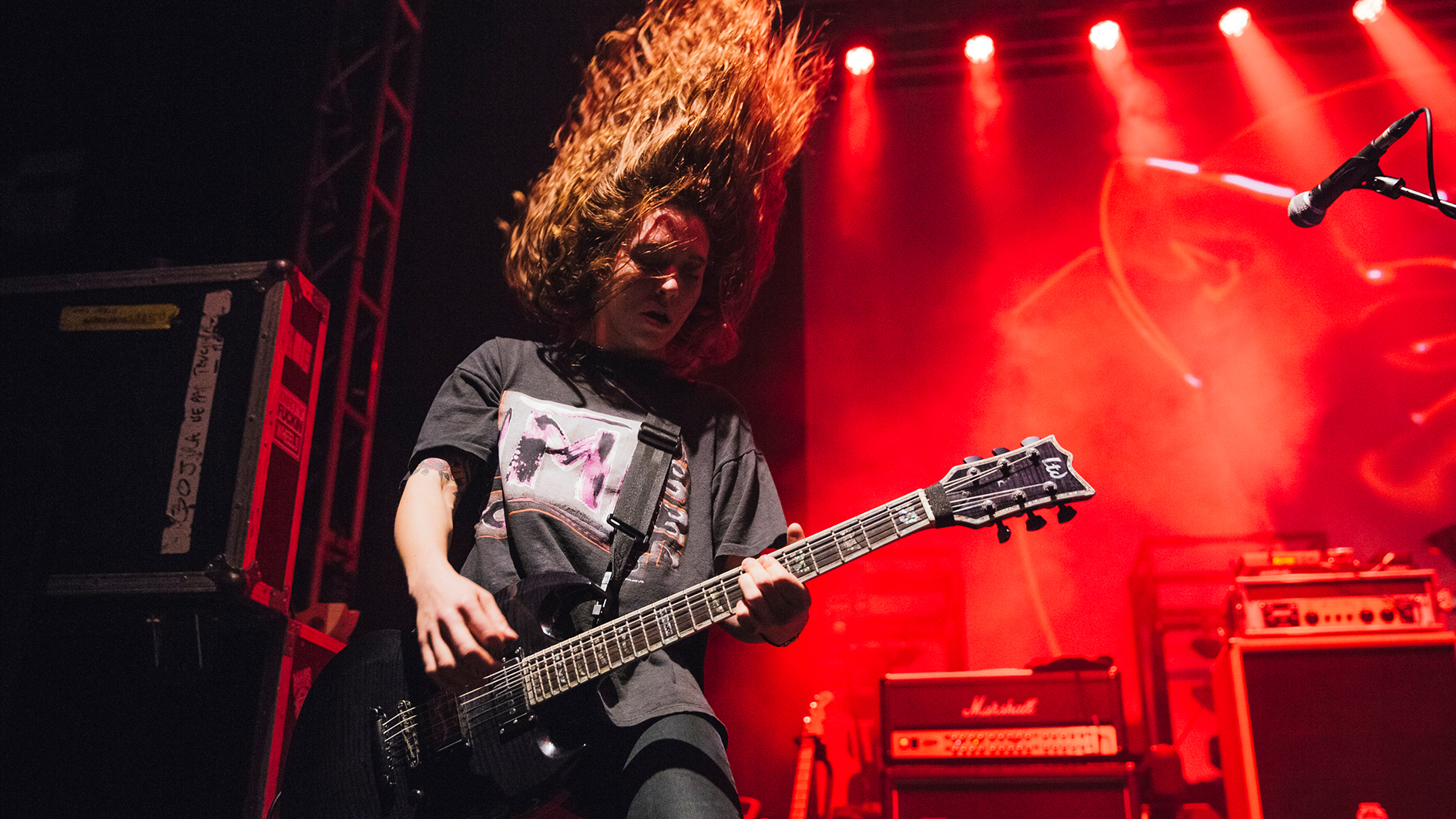
A large part of Code Orange’s sound comes from the chaotic noises that permeate the mix. Do you layer tracks to get that sound and are there go-to effects you use?
Meyers: "There’s literally layering all over the place. We went into this with a specific goal of getting the analog world and the digital world to blend. And there’s only so much space in the sonic spectrum. So I didn’t double up the guitar rhythms very much.
"There’s my track and then there’s Dom’s track. And then if I really needed to put in one more double, I would, but usually, I would do it digitally. Overdub-wise, we strategically placed and laid out a ton of shit to bring in a bunch of different sounds.
"For effects, I have a [Ibanez] Tube Screamer, some EarthQuaker shit, some Abominable Electronics pedals and a mini AMT wah pedal that I really love and used on tons of leads.
"Also, I have this old-ass Schumann PLL pedal. It’s not even really a pedal. It’s more like a synth box that’s super rare and sick and weird and makes crazy-ass noises. I would go back and forth and use that and other pedals and mix them together, which was pretty insane."
We went into this with a specific goal of getting the analog world and the digital world to blend
Reba Meyers
Landolina: "We used to have these big pedalboards. My standard chain would be the guitar into an Ibanez TS9 into a Decimator II [noise reduction]. For the noise parts, I would add on a Cry Baby [wah] pedal and an HM-2 pedal or some other crazy distortion pedal - maybe a chorus pedal and a reverb.
"I had one of those [Electro-Harmonix] Holy Grail pedals called the Epitome that had reverb, chorus and an octave pedal all in one. Sometimes we would do some parts where we would have some crazy noise, and I would hit a setting on my MIDI switcher on my pedalboard that would turn on the wah pedal, the Boss HM-2 and the chorus reverb and I would play with the knobs on all of them.
"On this record, we used a Boss Harmonist for some of those digital divebomb sounds. But for live stuff, I’ve switched over to using a Line 6 Helix, which is a multi-effects board that Joe turned me on to after he got one. It makes the sound-changing and organizing so much easier. And I can make sounds on the fly and be so much more creative than I used to be. It just sends the possibilities through the roof.
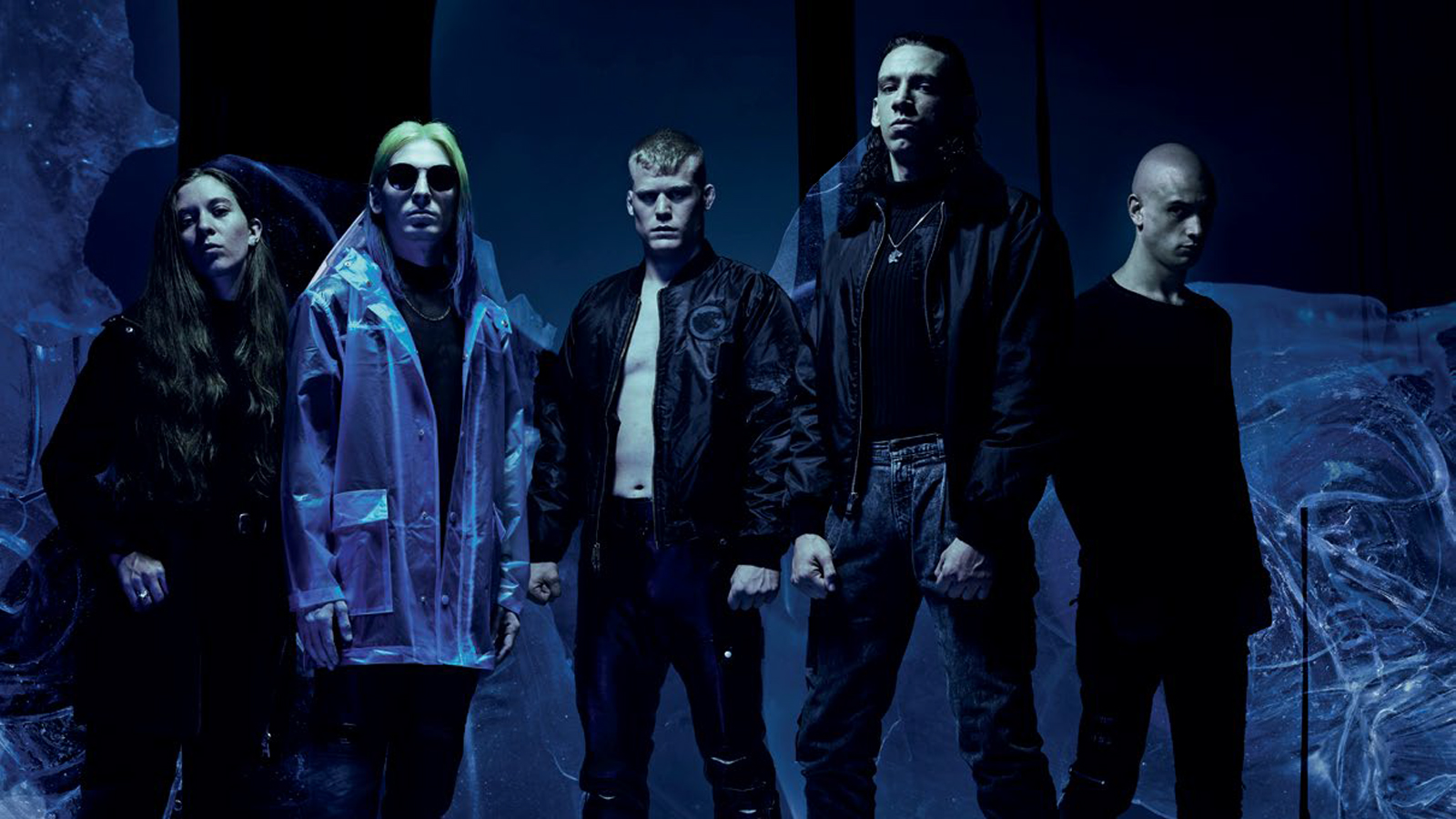
"I still love using all the analog pedals, but I gotta say having this thing is a lot better for troubleshooting onstage. My pedalboard used to have so many things wrong with it. So many patch cables were busted, and if something would go wrong I’d have to get on my hands and knees and start playing with all the patch cables to figure out what was making my signal cut out. It’s so much better to have everything in one unit."
Did you use any alternate tunings on Underneath?
Meyers: "Most of the songs are in drop B. Some of them are in drop A#, which is ridiculous, but it variates things. A couple of songs are in some weird-ass tunings that I can’t even really explain. I was fucking around and trying to think of ideas and sometimes I’d change the tuning almost randomly. That can sound really cool and weird, but it can lead to trouble when you’re trying to play that stuff live."
Did you feel overwhelmed by the success of Forever? Was there pressure to raise the bar and reach a higher level of achievement?
We want to take this as far as we can. We just want to show the world why heavy music is amazing and why we love it
Reba Meyers
Meyers: "There was definitely a realization that we were doing the right thing. Sometimes, it was hard to write new stuff that we loved, but we never went, 'Oh, we can’t do this.' We don’t think that way and we’re always pushing ourselves to grow. By the time Forever was done, especially with the touring and stuff, we all said, 'Okay, Forever is in our rearview mirror now.'"
Would you like to play arenas one day?
Meyers: "Hell yeah. We want to take this as far as we can. I don’t have a checklist that I go to each time we’ve reached a goal. It’s nothing like that. We just want to show the world why heavy music is amazing and why we love it."
Do you feel like you’re alone in a crowd or part of a scene of new noise-hardcore-metal bands?
Meyers: "It depends on the day. I love bands like Full of Hell and Nails, but ever since we were kids, we’ve always felt isolated and we still feel like that a lot. At the same time, we feel really connected with each other and the band.
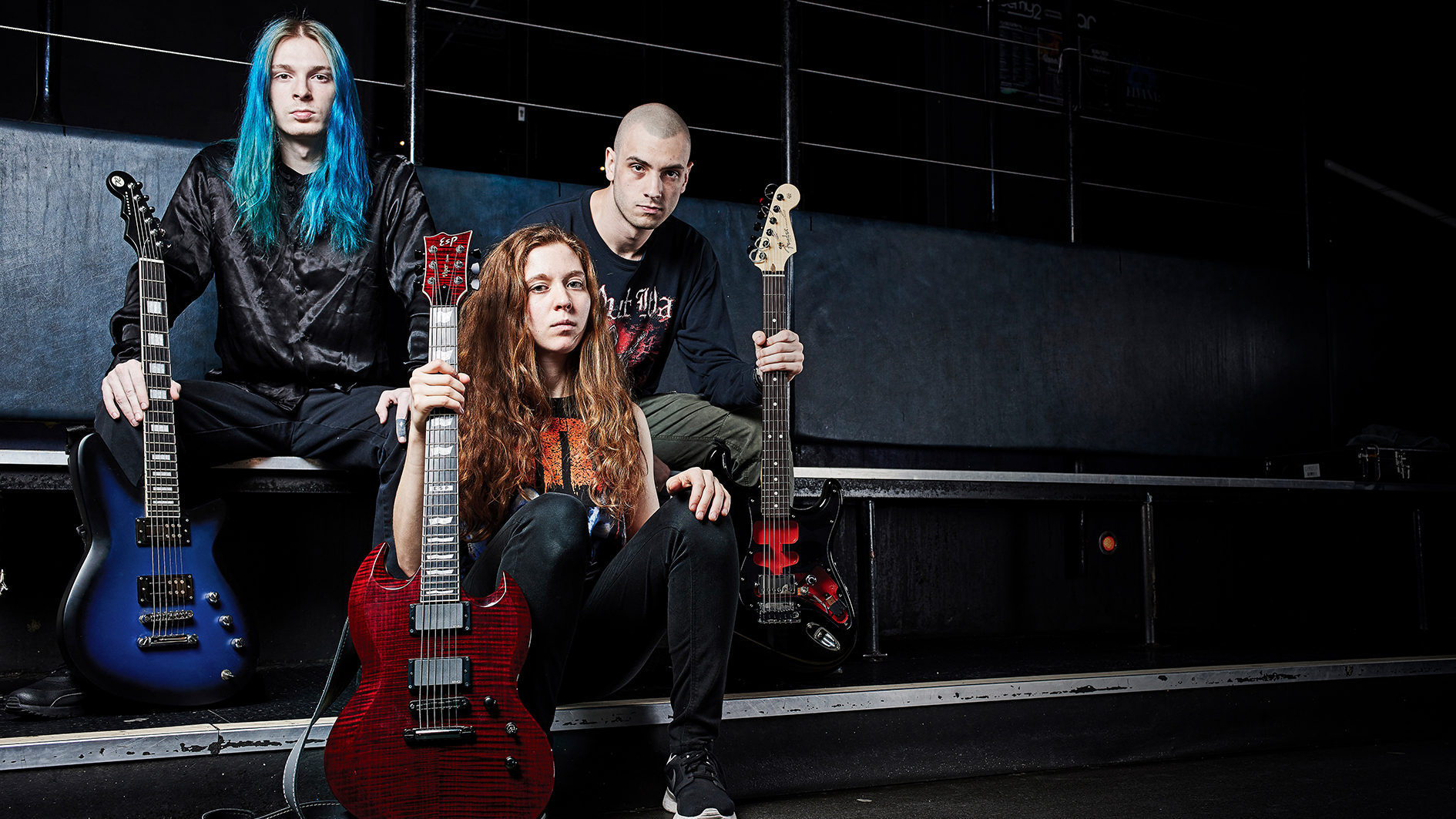
"But at the end of the day, we’re not doing this for anyone but ourselves. If people want to accept us and check us out, that’s great. But we’re making this shit because we fucking love it and I’m willing to die for it, regardless of whether other people give a shit or not.
"You have an explosive stage energy that’s sometimes frightening and dangerous. You’ve taken guitar headstocks to the forehead and Eric has broken fingers and toes onstage. It’s like an emergency room visit is only a show away."
Meyers: "You gotta jump around and be crazy. And when you’re from the punk and hardcore scene you don’t even think about it. Being really energetic and generating all this chaos makes playing so much more fun.
"I hate watching bands that just stand there when they play. It’s like, 'What’s the point? If you’re not killing yourself up there, then you must not care as much as I do.'"
Jon is an author, journalist, and podcaster who recently wrote and hosted the first 12-episode season of the acclaimed Backstaged: The Devil in Metal, an exclusive from Diversion Podcasts/iHeart. He is also the primary author of the popular Louder Than Hell: The Definitive Oral History of Metal and the sole author of Raising Hell: Backstage Tales From the Lives of Metal Legends. In addition, he co-wrote I'm the Man: The Story of That Guy From Anthrax (with Scott Ian), Ministry: The Lost Gospels According to Al Jourgensen (with Al Jourgensen), and My Riot: Agnostic Front, Grit, Guts & Glory (with Roger Miret). Wiederhorn has worked on staff as an associate editor for Rolling Stone, Executive Editor of Guitar Magazine, and senior writer for MTV News. His work has also appeared in Spin, Entertainment Weekly, Yahoo.com, Revolver, Inked, Loudwire.com and other publications and websites.

